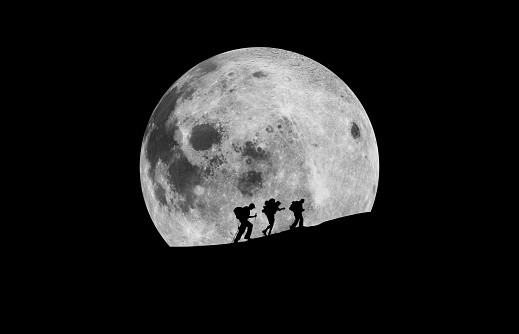More than a heavenly body, our moon is one of the brightest objects in the sky. Interestingly, our moon does not emit light in the visible spectrum. But, instead, the moon's infrared light. However, this is not the reason why we see the moon shining. The moon is reflective and reflects visible light emitted by the sun. In celestial body terms, the moon is not that good at the light reflection, according to the National Aeronautics and Space Administration NASA. As the night appears, the moon is one of the only large light sources, making it appear brighter than it is. The moon's brightness is because it is close to the blue planet.
How Reflective our Moon Is
Compared to other celestial bodies, the moon is not that bright. The moon only reflects 3% to 12% of the sun's rays that hit it, based on a Scientific American report.
The moon's brightness on the earth depends on the planet's sky, which is located relative to the sun.
One of the less reflective heavenly bodies in the solar system, the moon still appears very bright on earth.
That is because of the earth's physical distance (closeness) to the moon.
The average distance between the two celestial bodies is 240,000 miles, which may seem very far, but in terms of how far away most objects are in the vast universe, the earth and the moon are practically neighbors.

Does the moon emit light? Study shows that the moon is not as bright as viewed in the universe.
ALSO READ: First Woman on the Moon: NASA Presents List of Female Astronauts for Its Artemis Mission
The Two Types of Reflectivity
Based on the study of FlatEarth, the first kind of reflectivity is spectacular.
This kind of reflectivity is the science behind the mirror's reflection. They reflected this way in a single direction.
The second kind of reflectivity is diffuse reflectivity. The light reflected will scatter in numerous different directions.
An easy way to illustrate the difference between the two types of reflectivity is by thinking of a lake.
Imagine a lake hit by the sunlight on a windy day. The light reflection will scatter, and you cannot see the reflection of the coastline in the water. The water will appear to be sparkling as the product of the reflection.
That is an example of diffuse reflectivity. Inversely, during the days the water is still, a reflection of the coastline is seen in the water. Think of this as specular reflectivity. The light is reflected off of geological features of the moon, like the craters, inactive volcanoes, and lava flows.
The moon's uneven surface is one of the reasons for its high rate of diffuse reflectivity. Combined with the optical illusion of being in the dark at night and how close the moon is. It also shows why the moon is so dim compared to other celestial bodies within our solar system, even though it appears so bright to the human eye.
According to Professor Christopher S. Baird of West Texas A&M University, the brightness of a planet or the moon is perceived by three things. The first is the object's light reflection or albedo, the second is the total number of light it hits the object, and the third is the distance between the object and the instrument used to view it.
RELATED ARTICLE: Where Did the Name "Harvest Moon" Come From?
Check out more news and information on Space in Science Times.



![Earth's Quasi-Moon Kamo‘oalewa Could Originate From Lunar Surface Not Asteroid Belt [Study]](https://1721181113.rsc.cdn77.org/data/thumbs/full/53275/89/56/50/40/earths-quasi-moon-kamo-oalewa-could-originate-from-lunar-surface-not-asteroid-belt-study.png)










